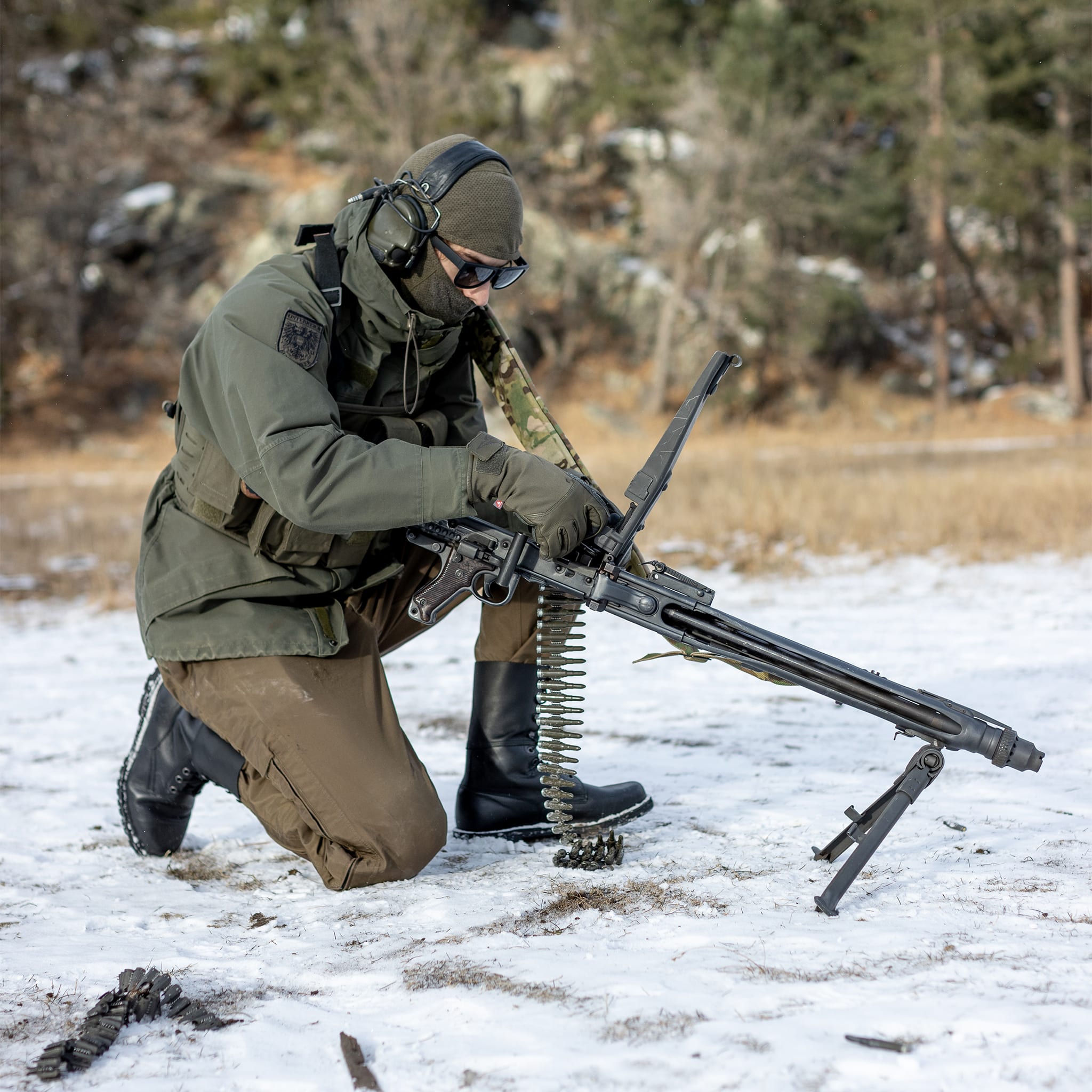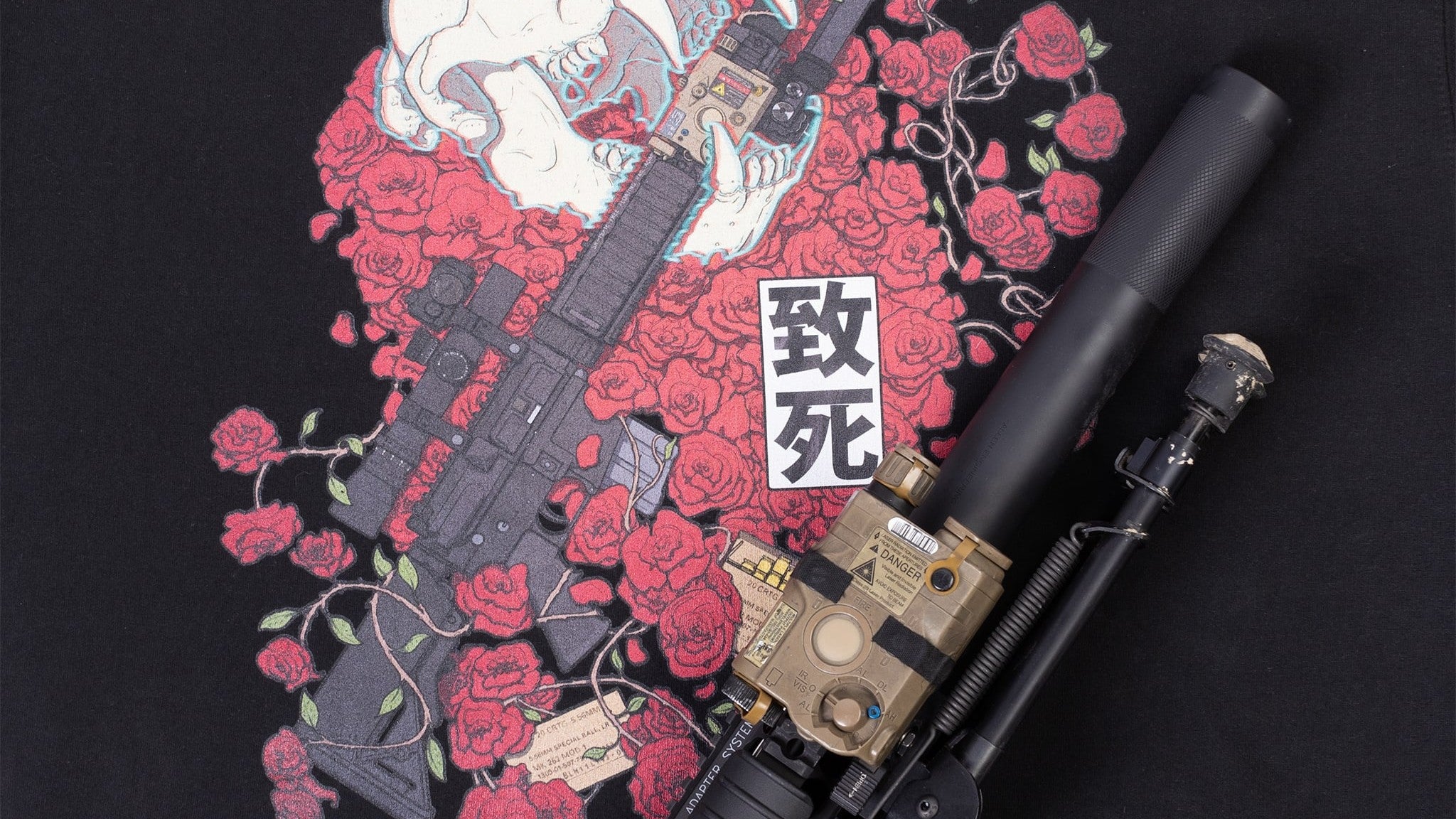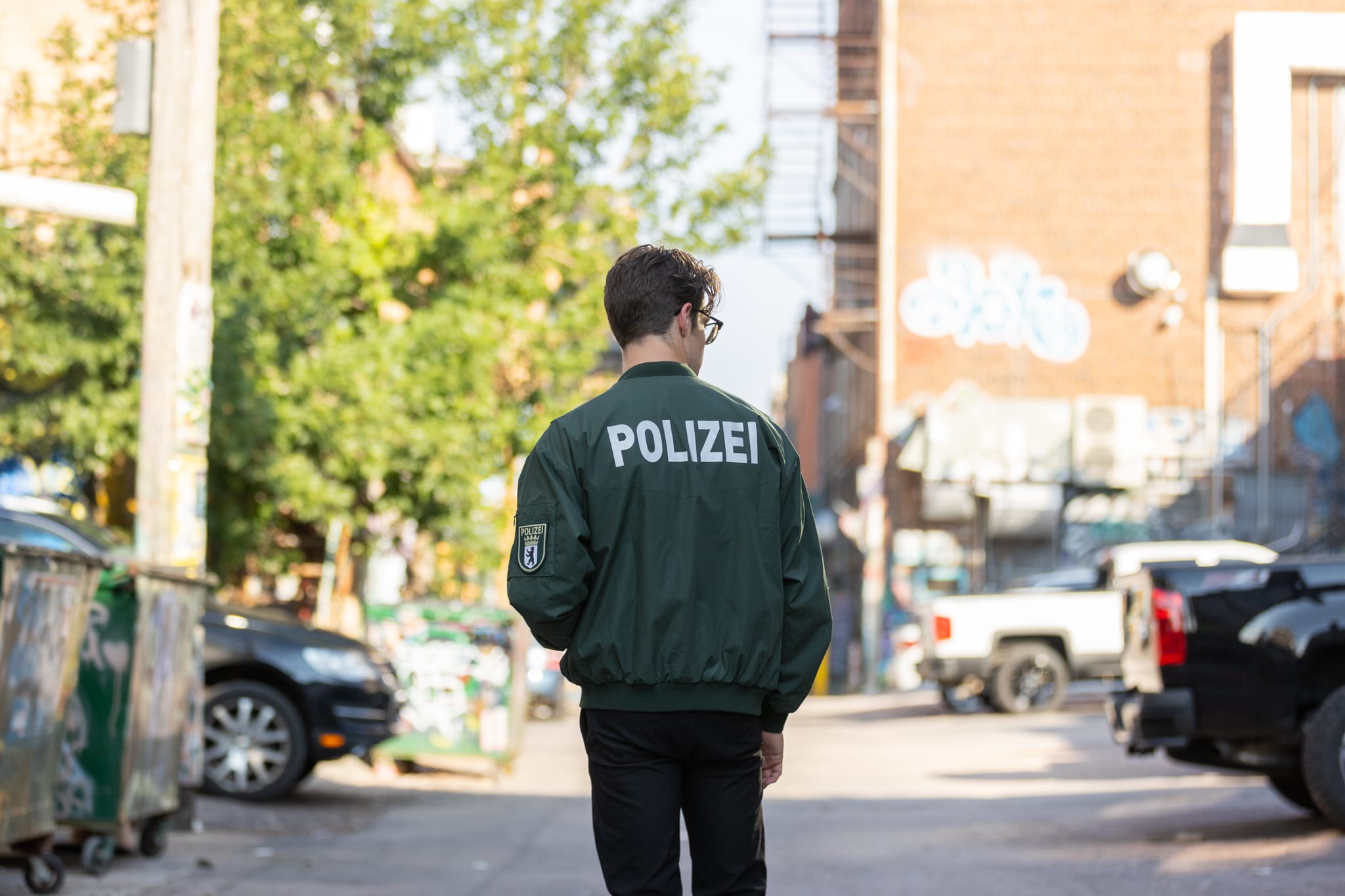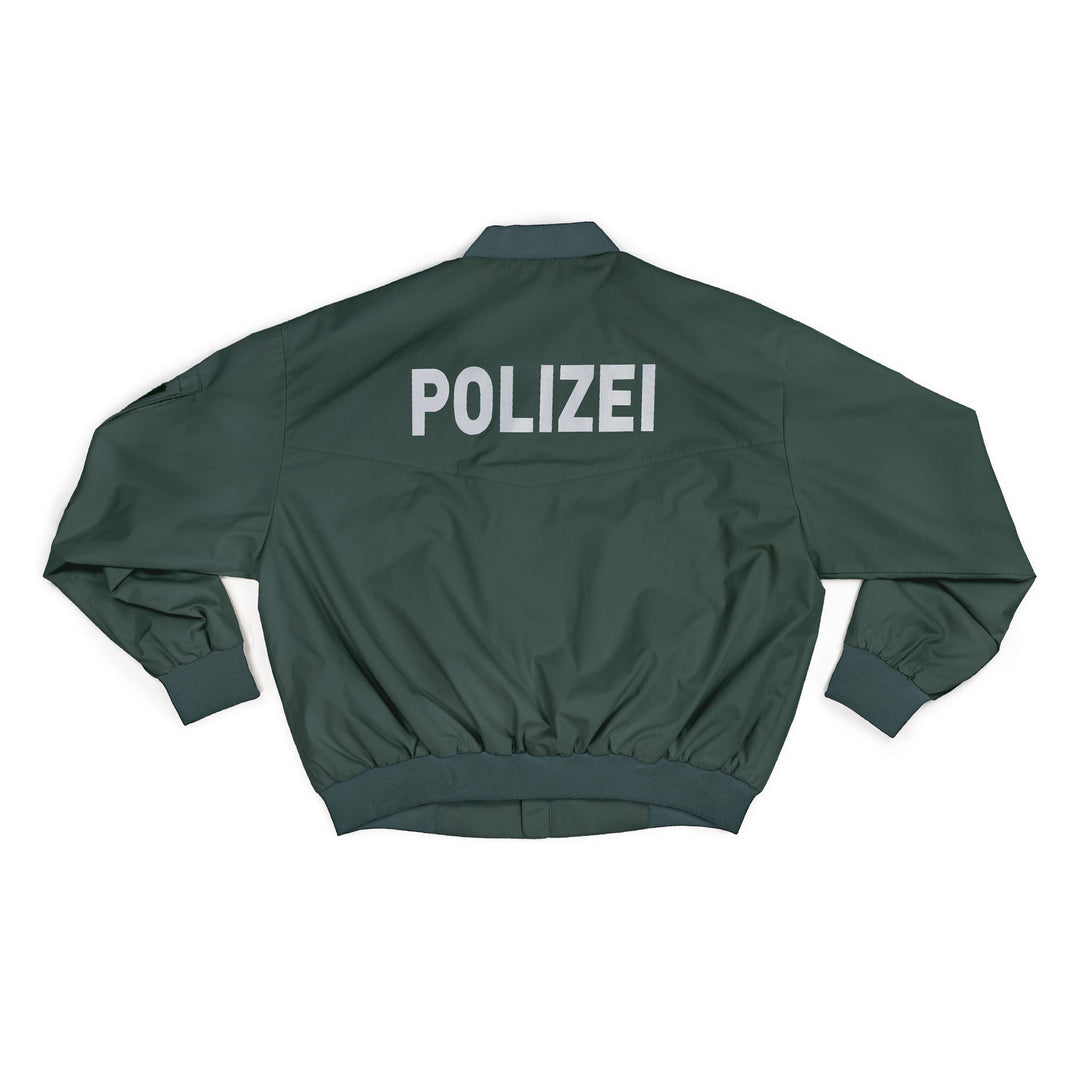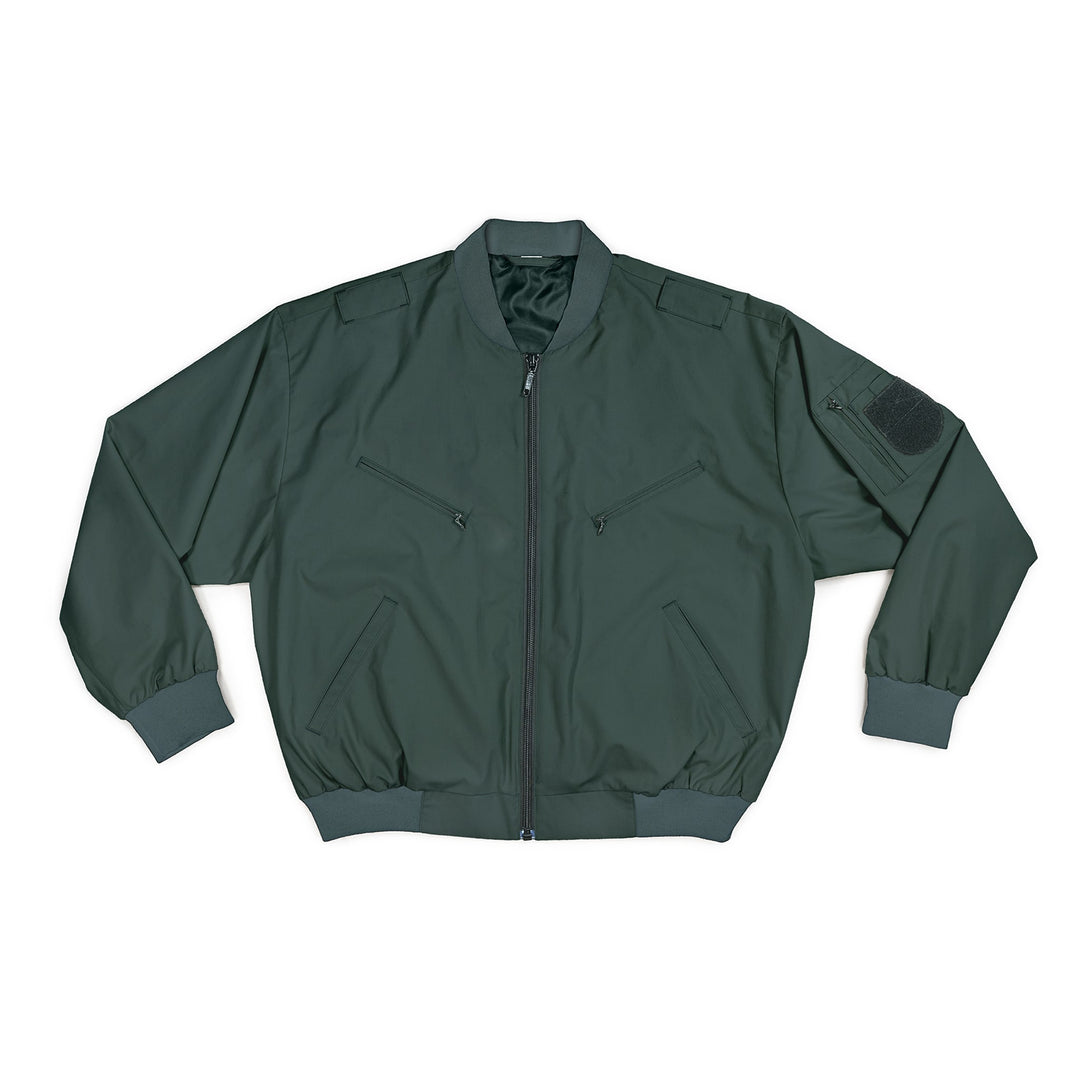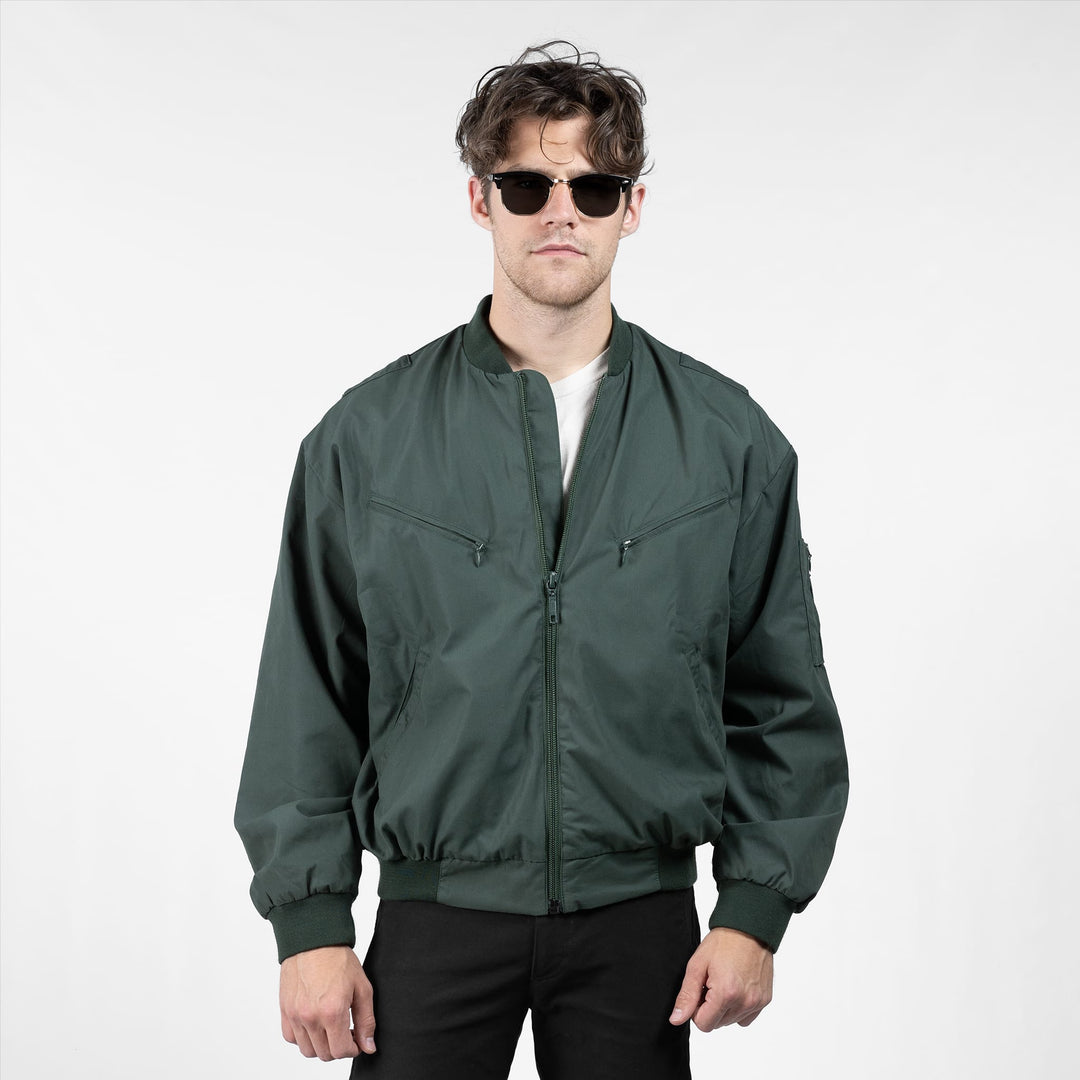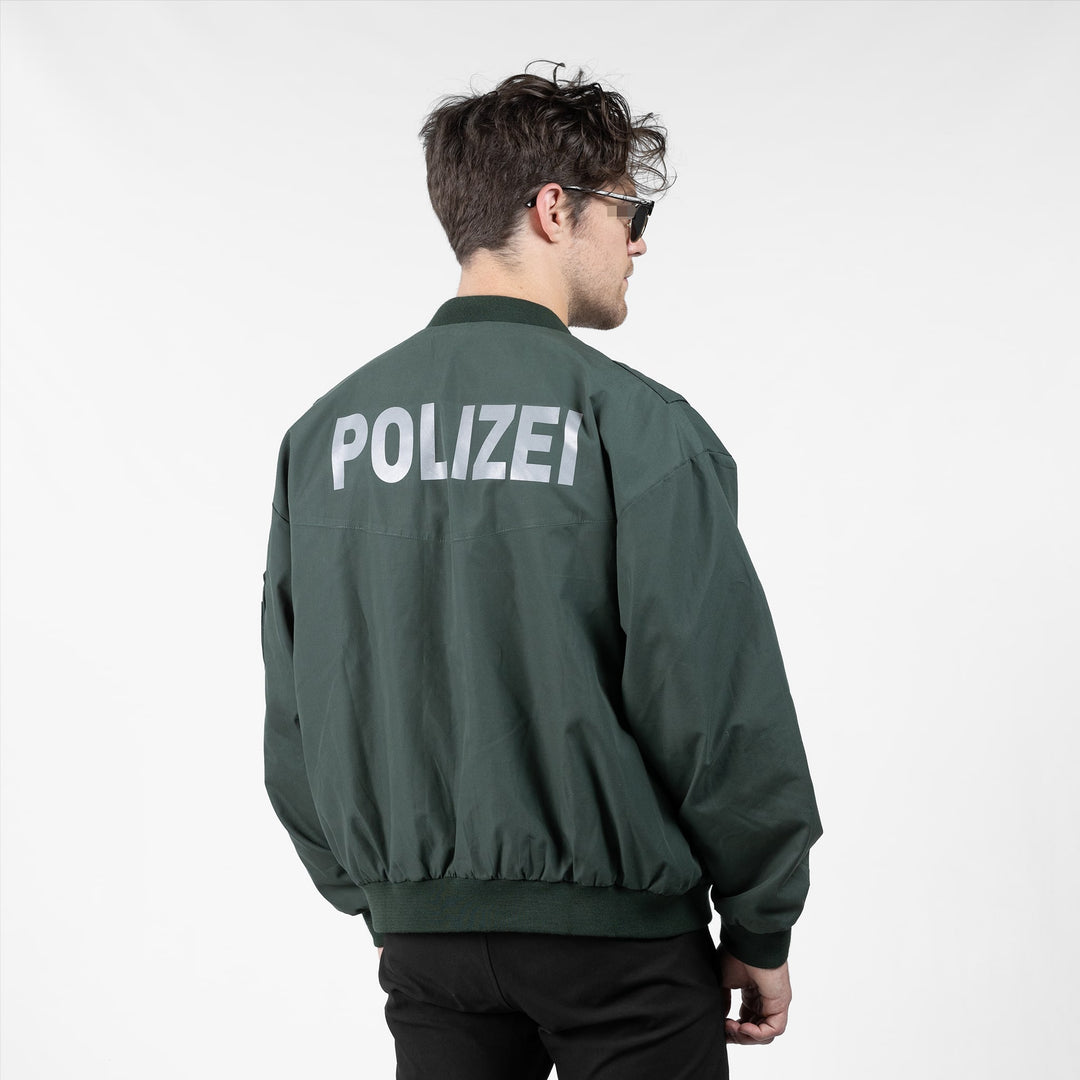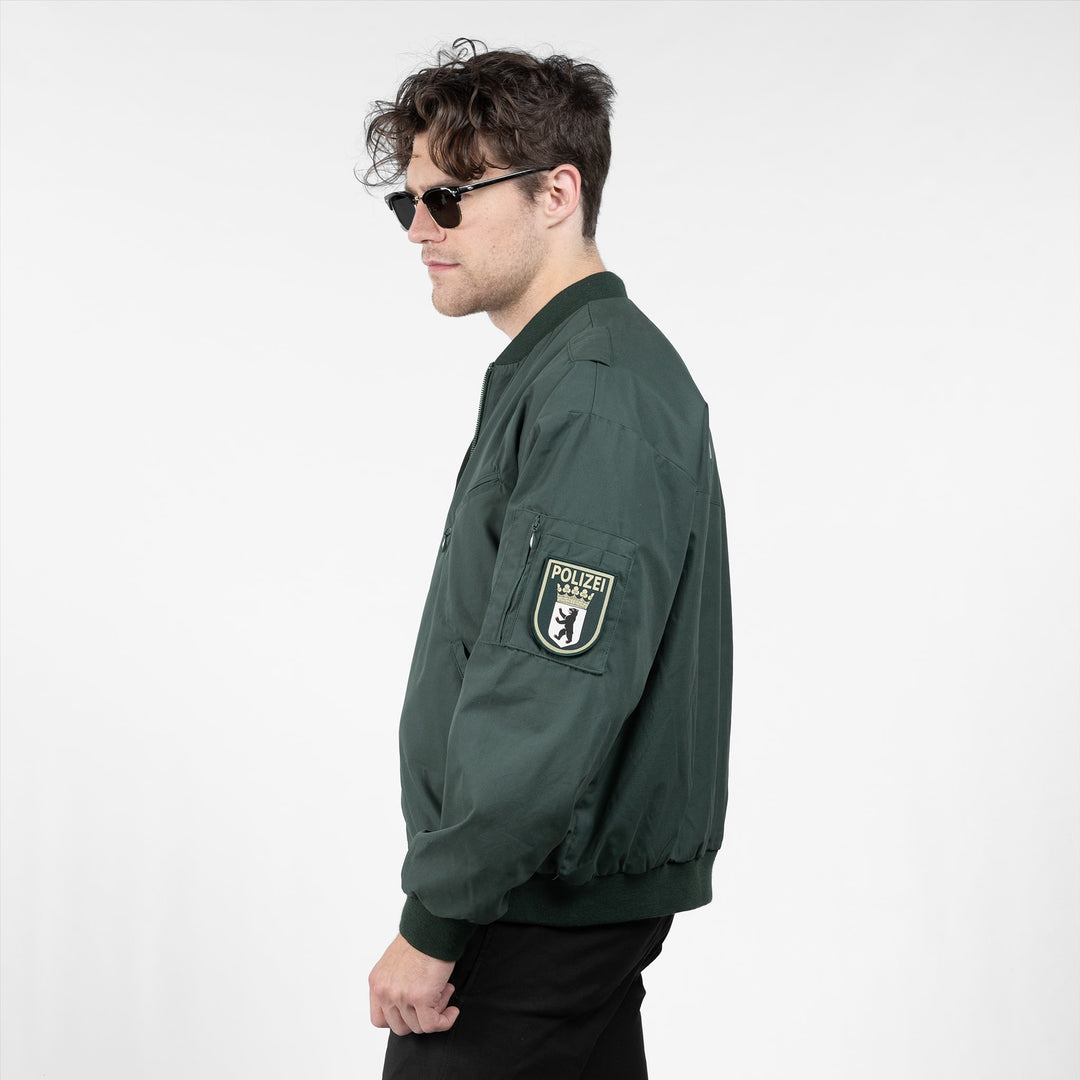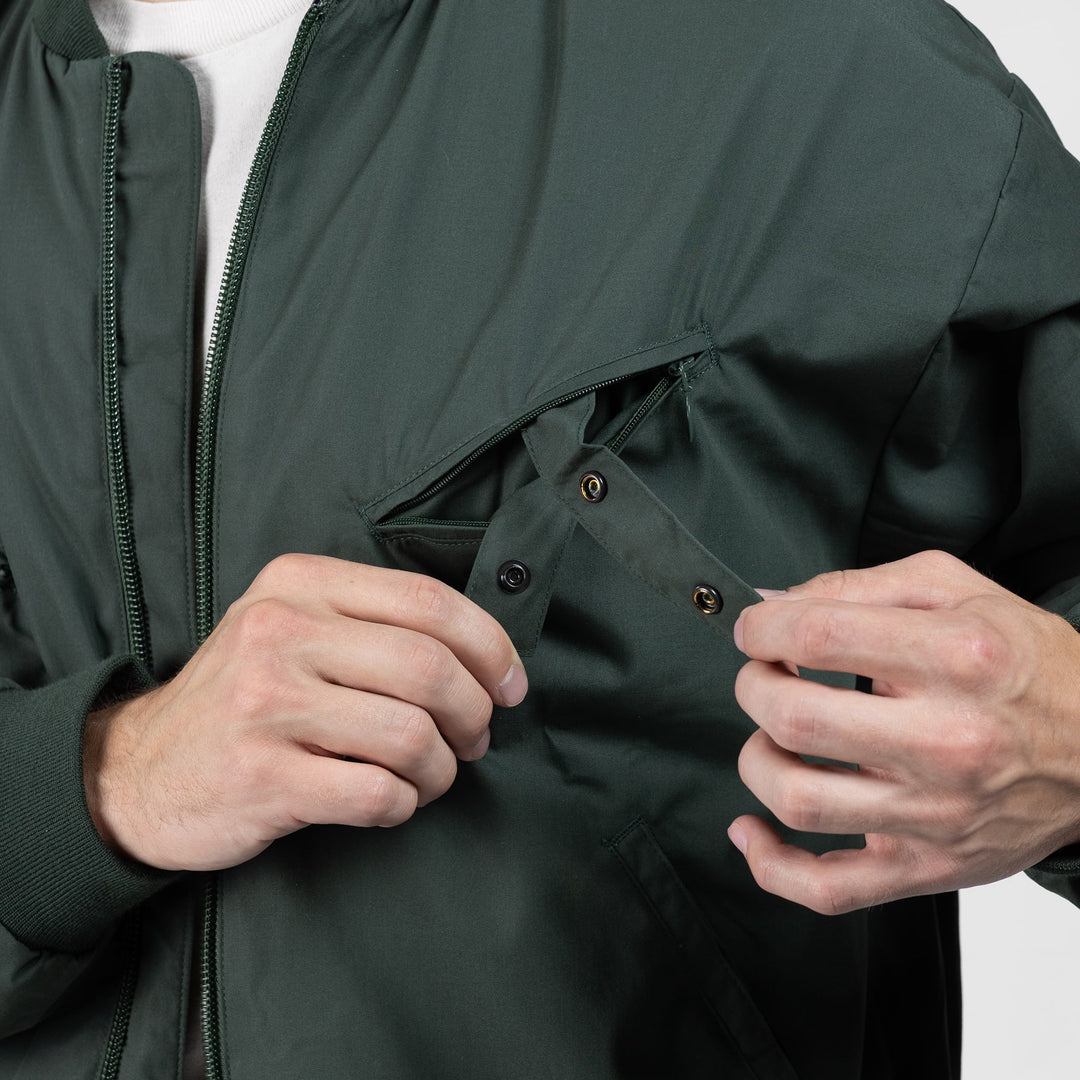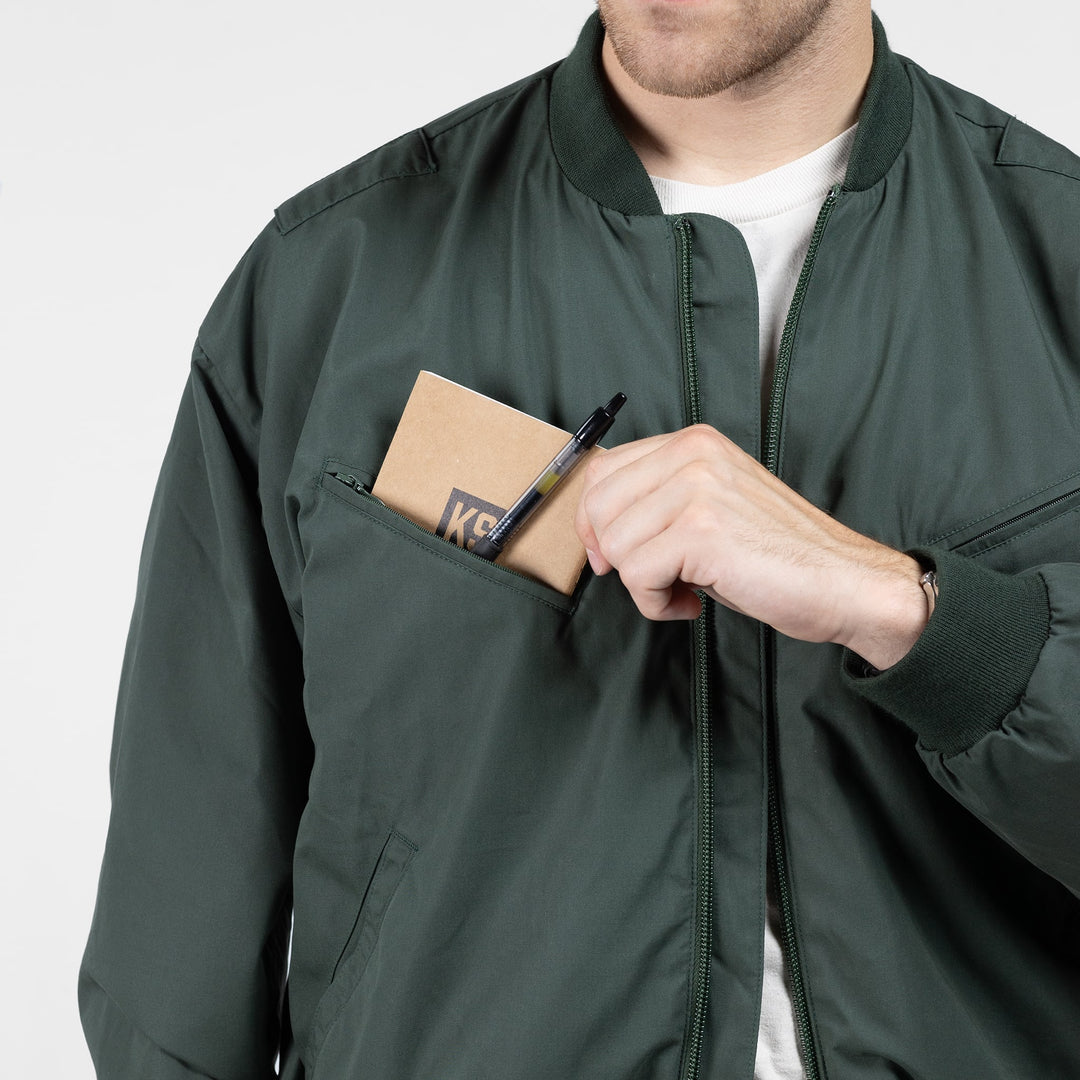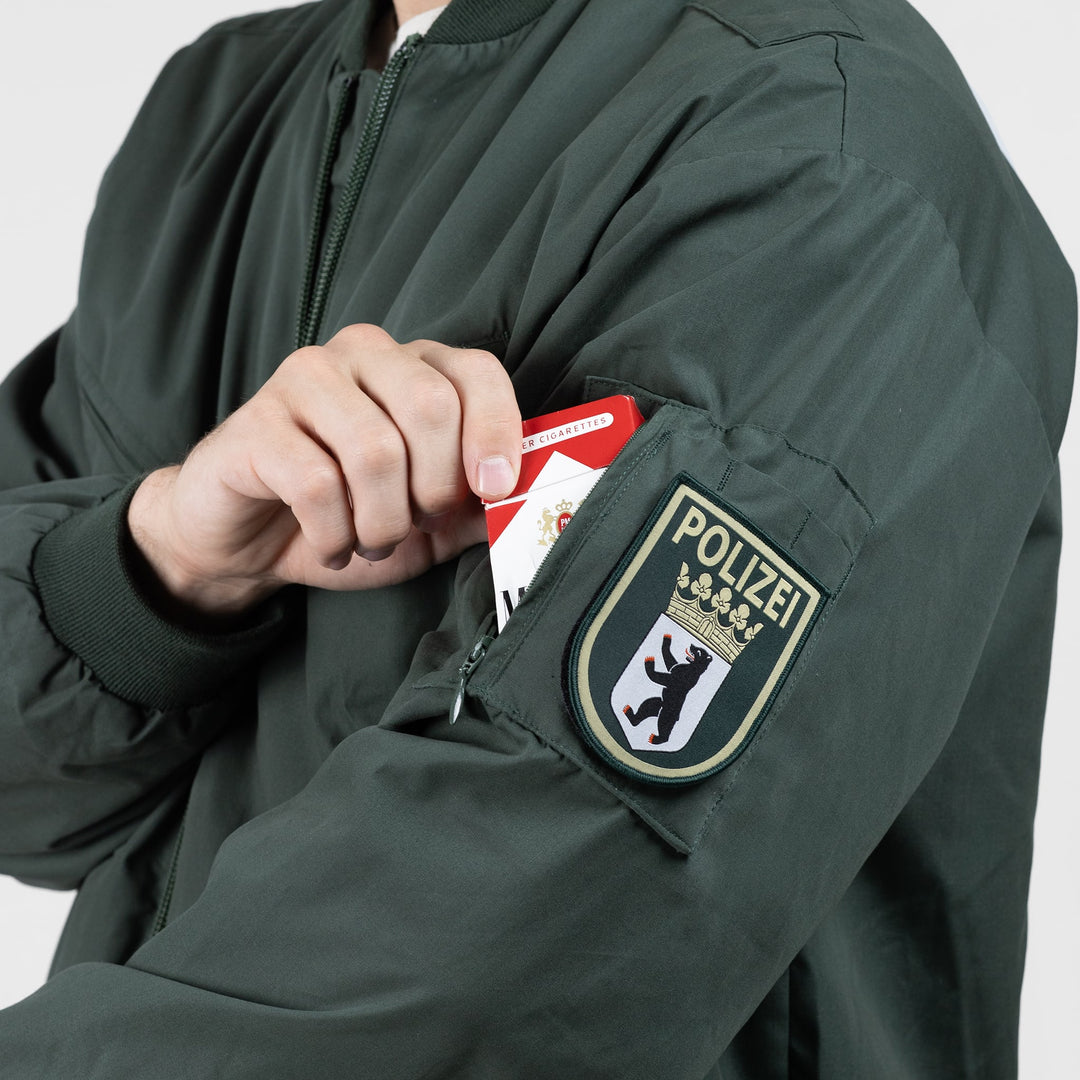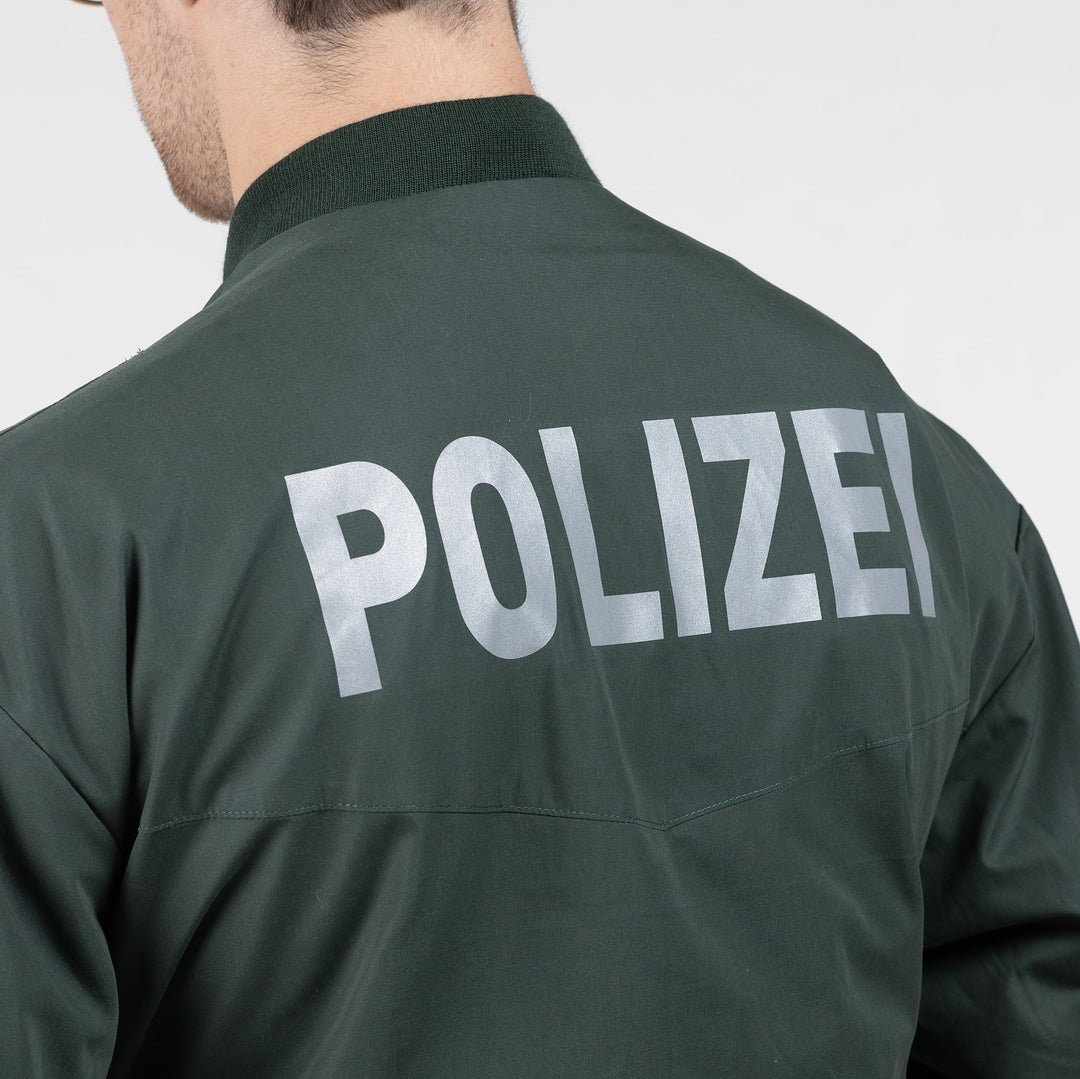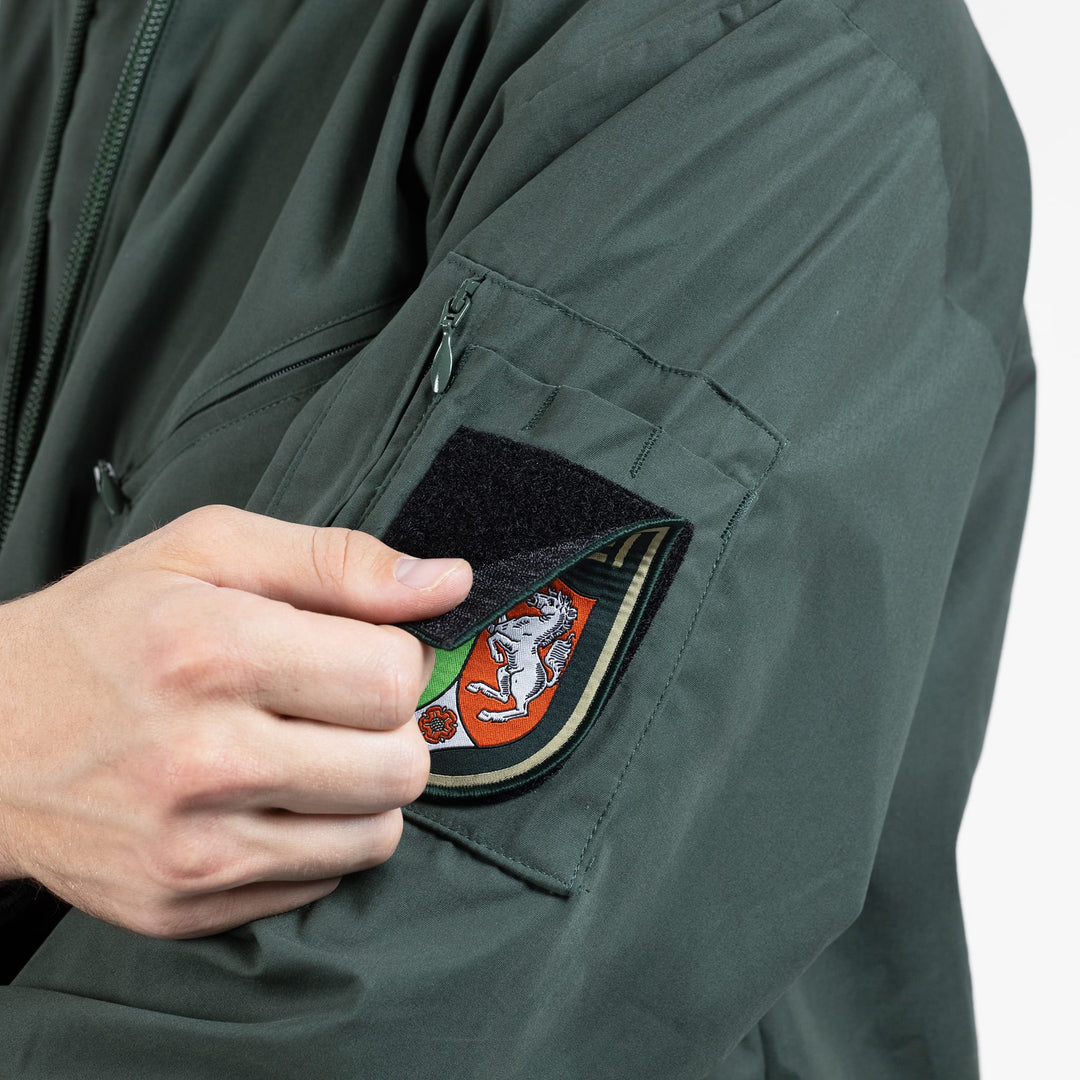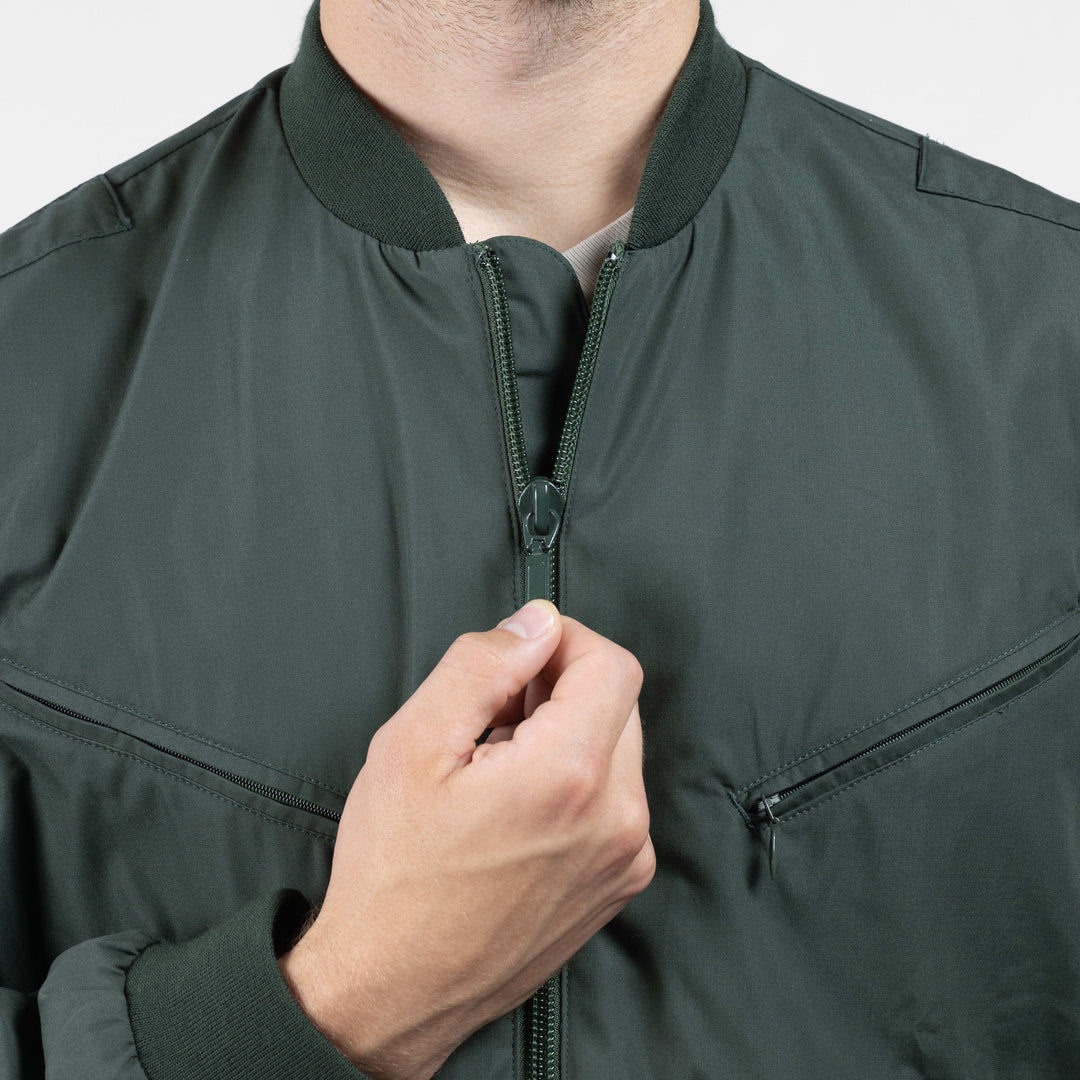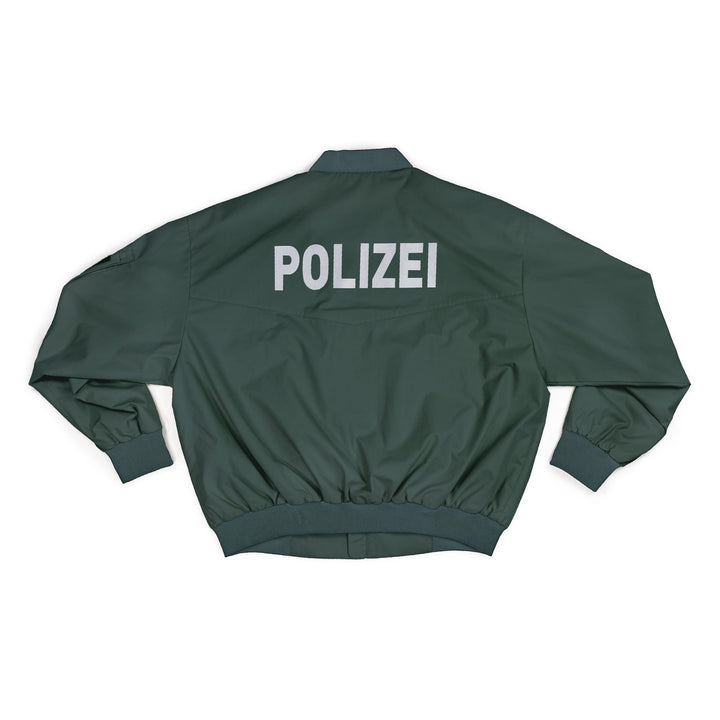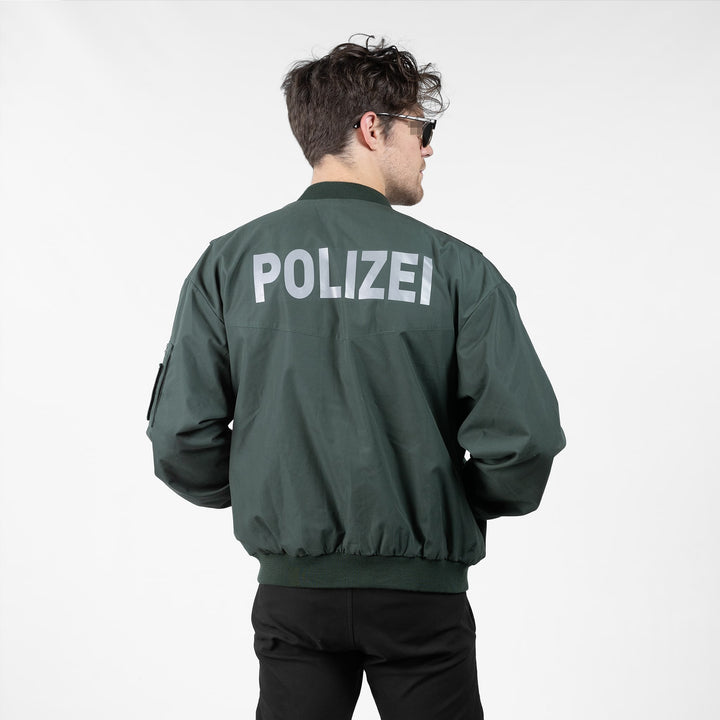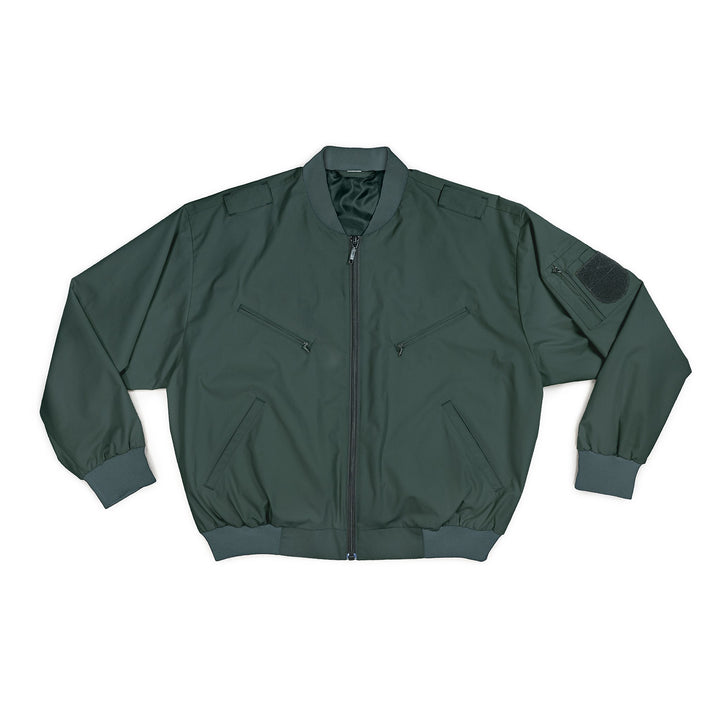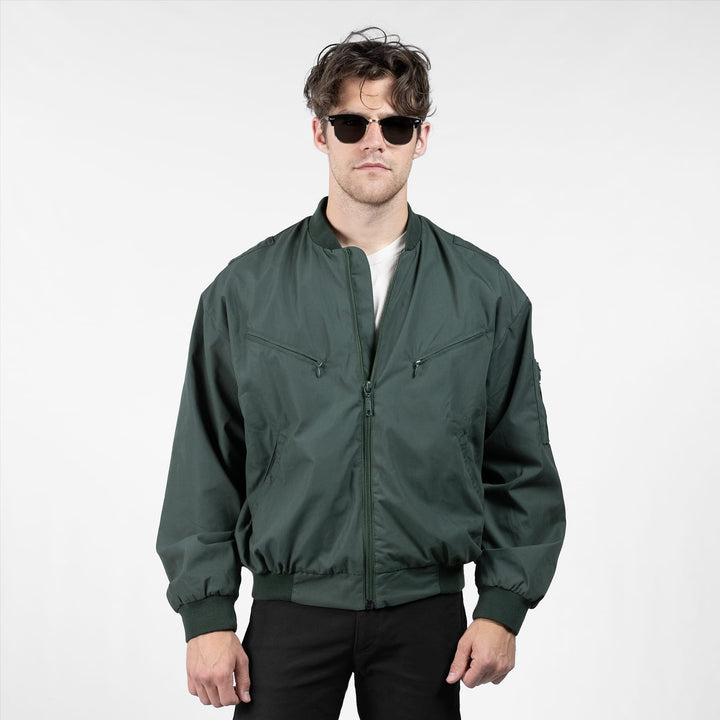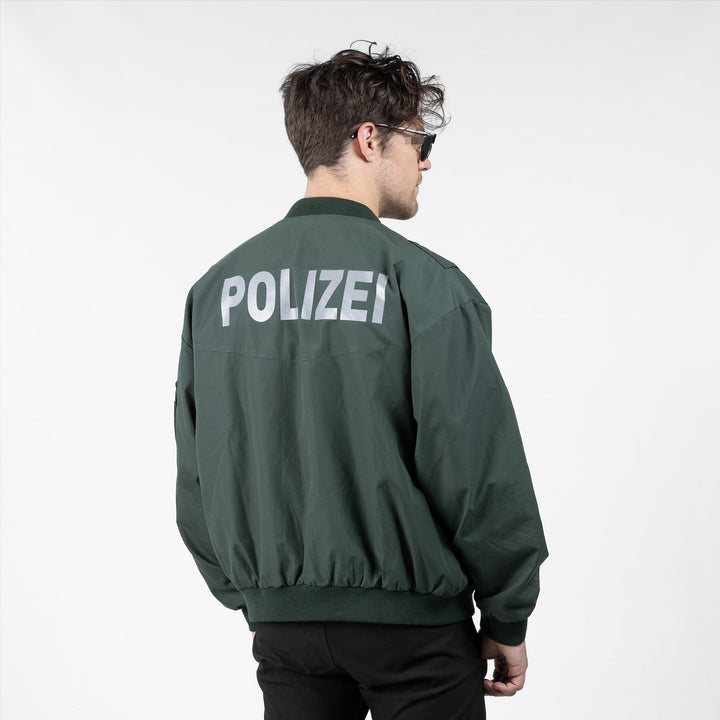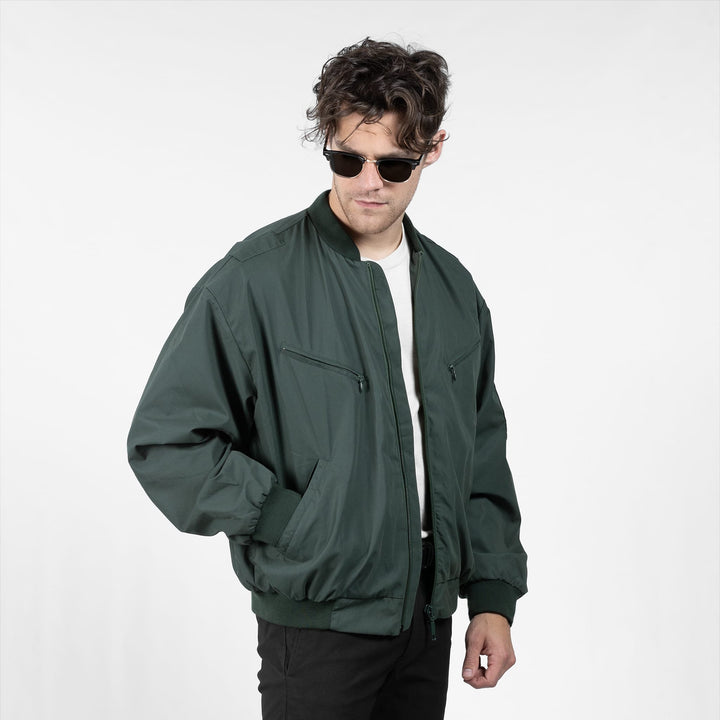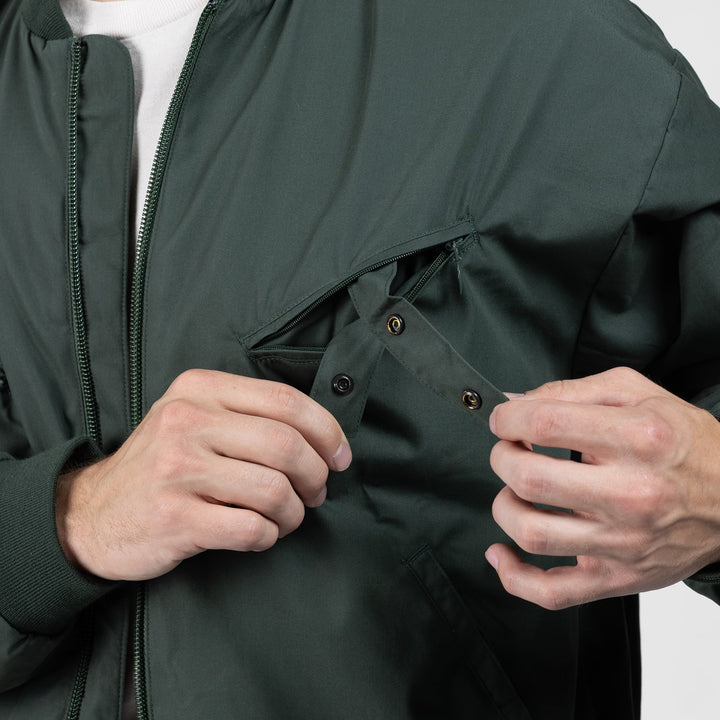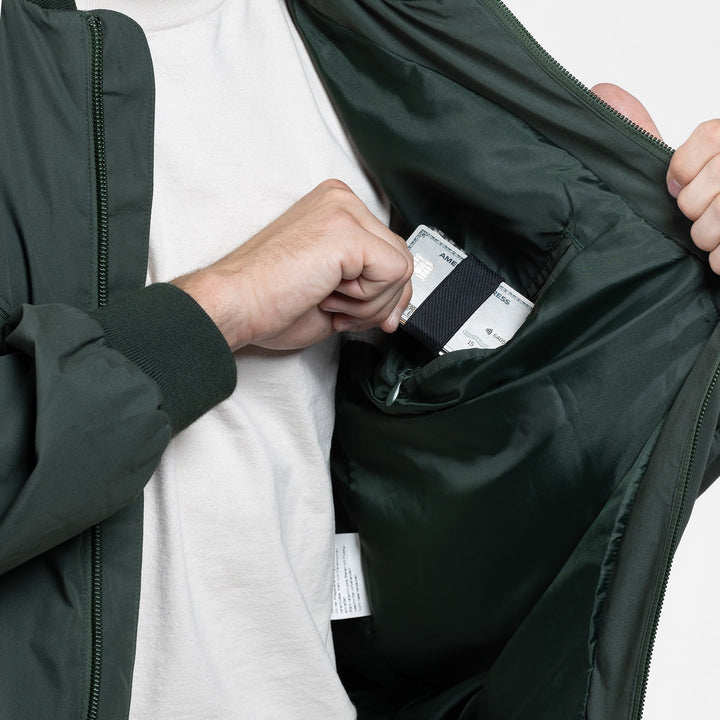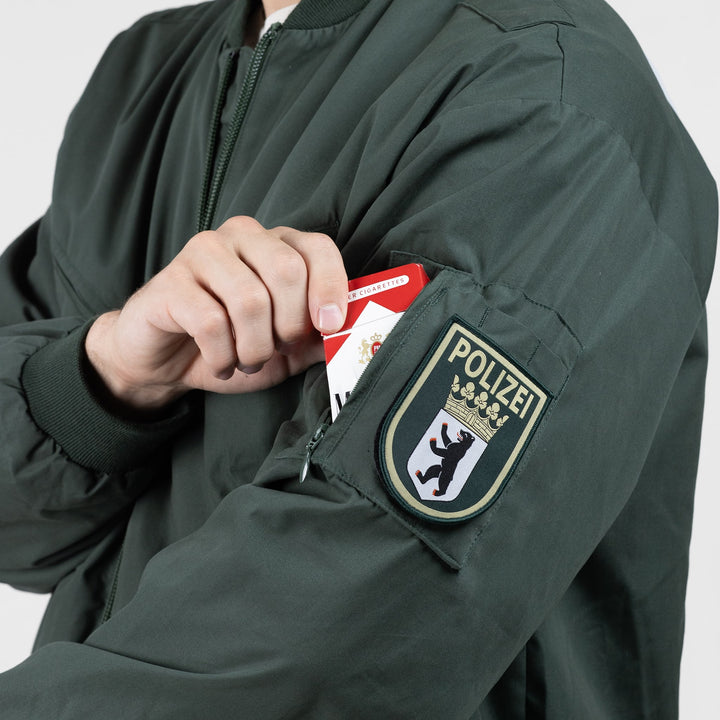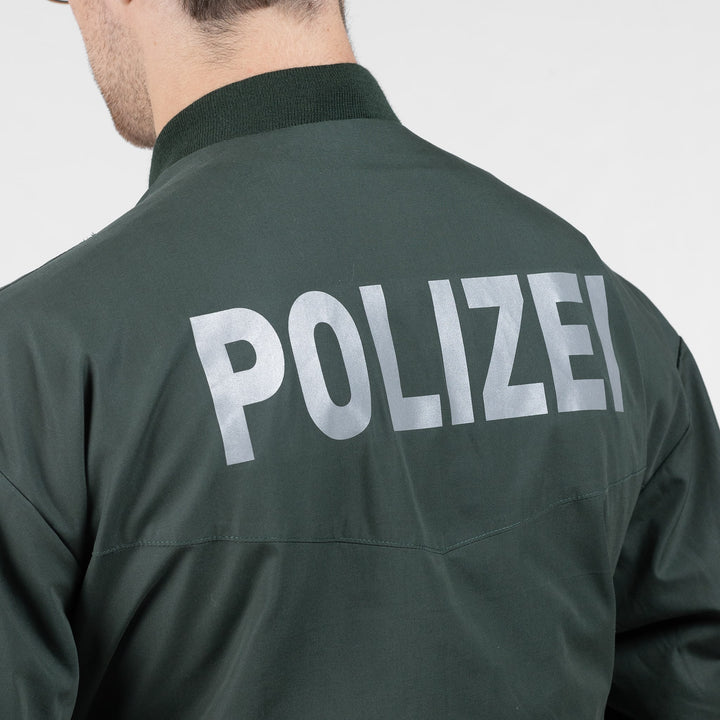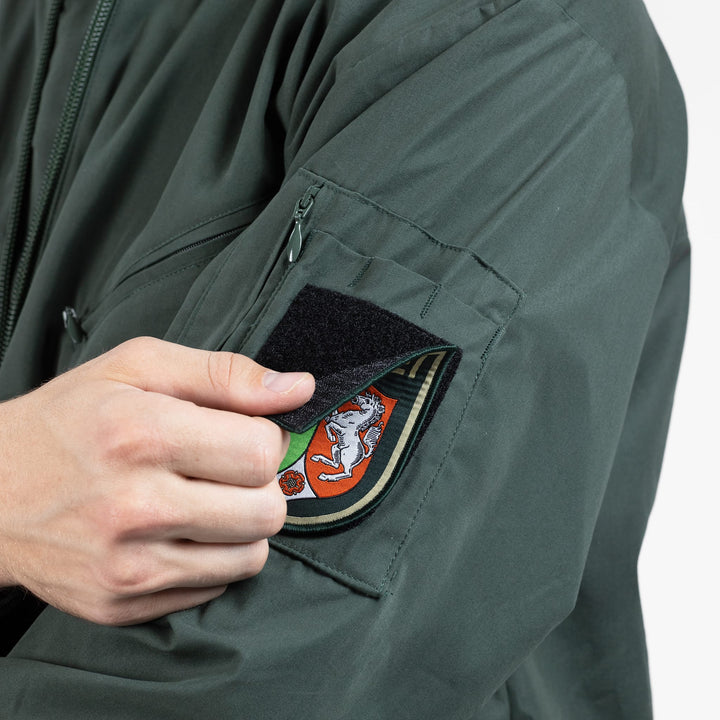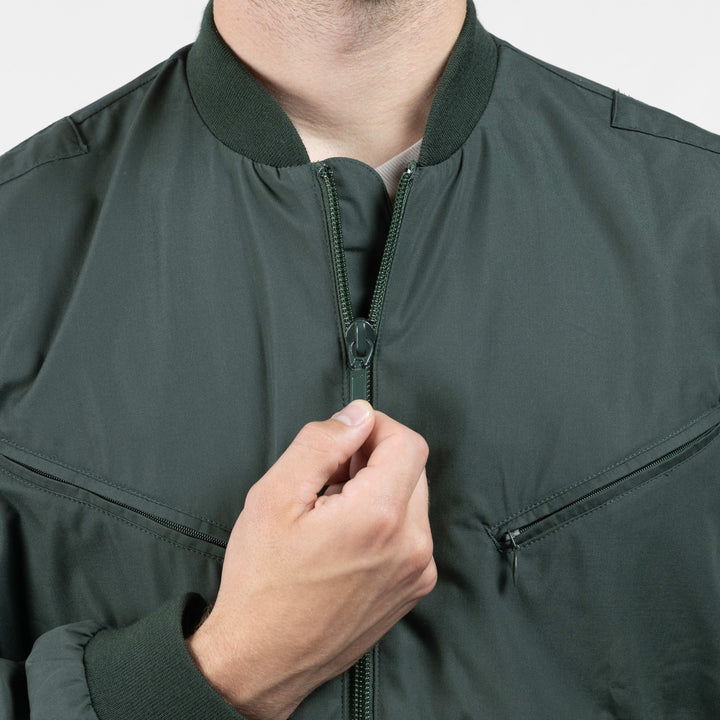Snuffed out by the EU. Banned in Germany. Nearly 30 years after the Fall of the Wall, one of the Cold War’s most iconic jackets is pretty hard to track down.
The German Police “Sommerblouson” is a lightweight, front zip bomber based on the American issue MA-1. Cut in a utilitarian, no-nonsense style it is unfussy, sharp, and damn near unobtainable.
The Sommerblouson, and its famous Förstergrün (forest green) coloration occupy an important place in the history of Germany. Introduced in 1972, Förstergrün hit the streets right as the Cold War turned Europe upside down. With the eyes of the globe on Berlin, Germany’s green-clad Polizei were given the Sisyphean task of maintaining order in the cultural, political, and military chaos that was West Germany. If a punk show ran late, Förstergrün jackets shut off the lights. If a spy needed chasing, Förstergrün jackets were hot on their heels. From the evening news to morning cartoons, forest green Polizei became a quirky, unique part of German national identity.
The iconic green uniform persisted for nearly three decades. That was, until the EU got wind of things and issued a 1998 “recommendation” that “all member nations” switch to an internationally recognized dark blue color.
For the full story, we highly recommend reading our full-length article on the subject.
The process of phasing out the uniforms was anything but smooth for Germany. If anything it sparked a miniature culture war with German states openly defying the EU mandate.
It’s not much of a spoiler to say that the EU won out in the end. Förstergrün was largely off the streets by the mid-to-late 2000s with the last uniforms formally exiting service in 2016. By the time surplus Sommerblousons worked their way through the German state auction system and into the hands of US and EU collectors, it was far too late to get more.
Inspired by the history of the jacket and repeated requests to source it, we spent months researching the bomber’s supply chain. There were a lot of dead ends, but we were lucky. The manufacturer was still in business — even better, the original factory, original tooling, and original fabric dyer were all still around. Rounds of negotiations between all parties led to a one-time deal: the Sommerblouson could live again if we met their minimum order — and thanks to the support of some of our most dedicated customers, we were able to bring back the bomber.
- Shawl collar
- Ribbed knit cuffs
- High-quality reflective “POLIZEI” lettering on back
- Includes removable, Velcro-backed “POLIZEI” state crest patch of your choice
- Premium color-matched metal coil-style main zipper
- Slash pockets and zip utility pockets on chest
- “Cigarette pack” zip pocket on bicep
- Hidden interior pocket
- Made by the original German manufacturer to original Polizei specifications
- Shell: 67% polyester / 33% cotton
- Lining: 100% polyester
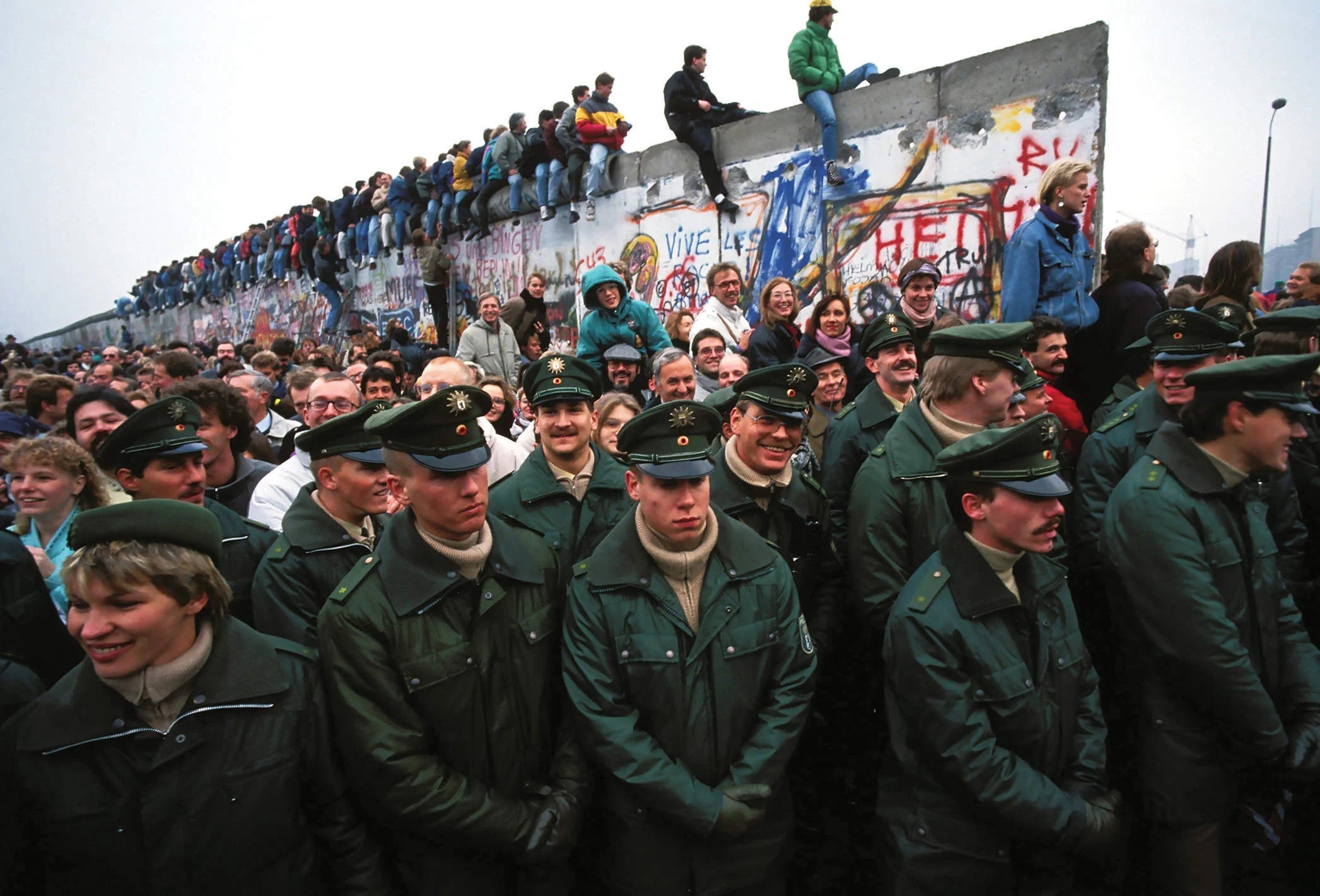
What Is Sommerblouson?
Sommerblouson was born in the heat of the cold war; a summer-weight patrol jacket issued to West Germany's State police.
The striking "Förstergrün" color debuted in the early 70s, and went on to symbolize the triumph of re-unification, and the fight against communist authoritarianism.
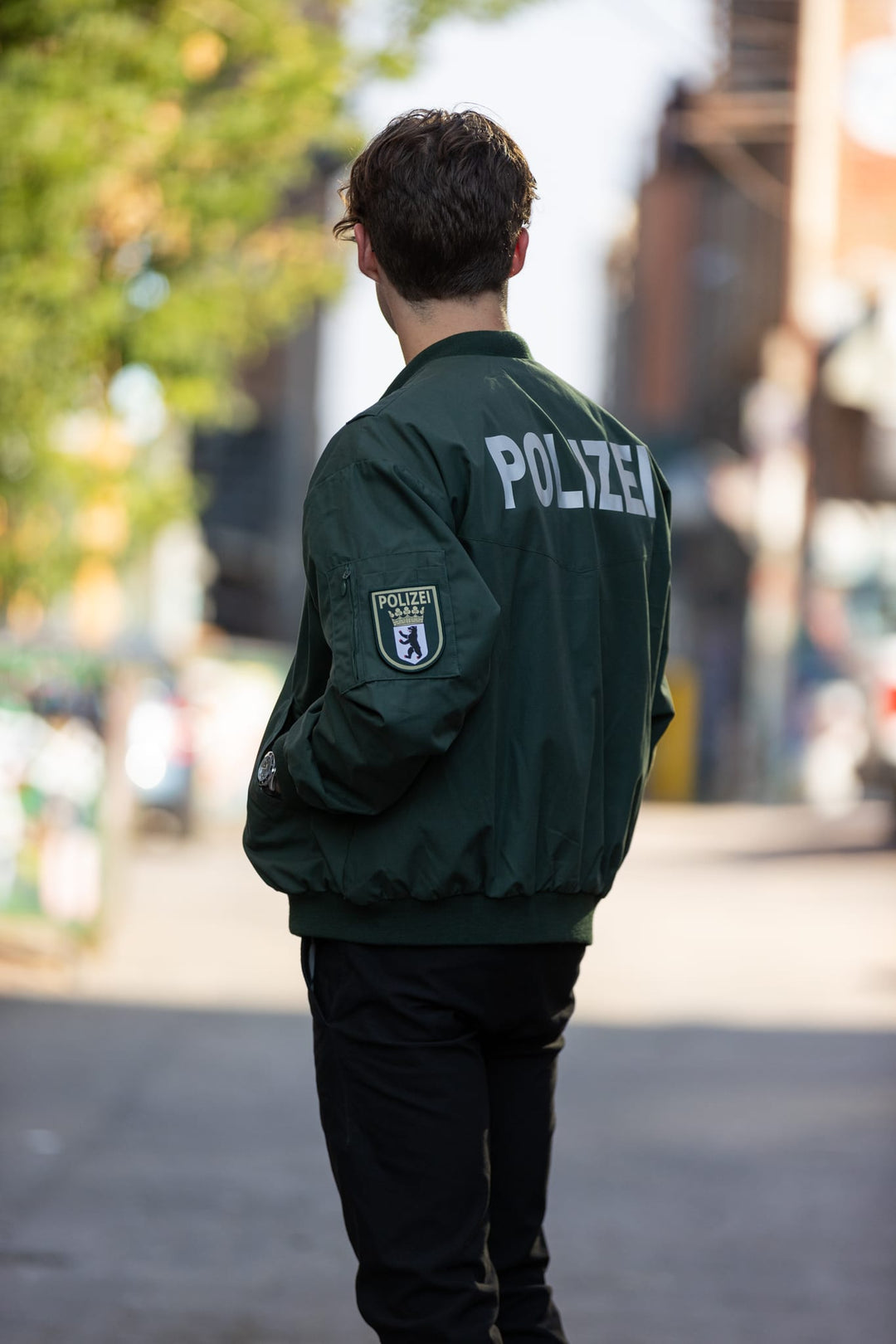
Cold War Cool
The EU forced the Iconic forest green uniform into retirement after 50 years, making Sommerblouson jackets an exceptionally rare piece of cold war history.
Sommerblouson gained a reputation as the most desirable part of the Förstergrün uniform, and original pieces are virtually impossible to find.
We sought out to bring the jacket back from Grailed obscurity for many more people to enjoy.

Beyond Authentic
Our 'POLIZEI' jackets are as close as it gets to one of the collectible surplus jackets. We're using the original manufacturer, original patterns, color-matched materials, and quality metal coil zippers.
Minus a few decades of storage patina, they might as well be the original.
And thanks to overwhelming support from Sommerblouson fanatics, we brought back the bomber from the dead.

Behind The Bomber
Read our in-depth article about Sommerblouson, It's history, and our effort to bring it back from the dead.




